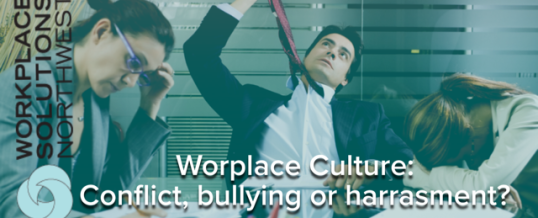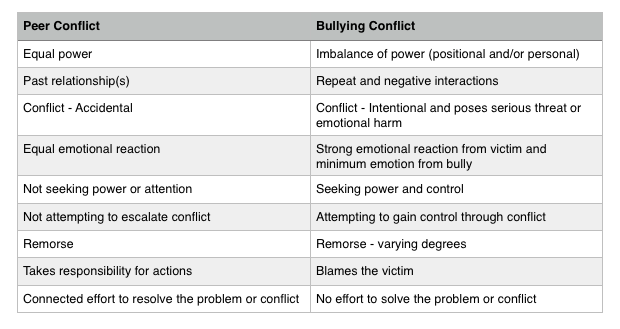
Some bullying is obvious, some is subtle. Often, organizations want to know if there is legal risk when they are deciding to do something about a problem like bullying. Bullying at work can usually be grouped into certain types, such as threats to professional status or personal standing, isolation, over work and destabilization (meaning failing to give credit, meaningless tasks, removal of responsibility, repeated reminders of blunders, or being set up to fail). It can reach into illegal workplace harassment if the targets are only of a certain protected class. Otherwise, there are no legal prohibitions in many states against bullying.
However, most organizations are also very concerned about employee engagement and organizational culture these days. Want to kill your employee engagement? Allow a bully to roam freely. But bullies only have impact when they work in a context which encourages their behavior. Using systems theory, we would say people behave logically within the organization because they are responding to systems and sub-systems which encourage their behavior. An obvious example is sales incentives. The sales incentive is an overt system which encourages sales people make their targets to get the bonus.
Another example is when an organization has weak compliance systems and allows dysfunctional behavior to occur, such as bullying. Some employee behavior is so obvious no one can claim they didn’t see it, hear it or know about it in some way, such as the behavior described in the last post Poor organizational culture part one. But how do we tell the difference between “regular conflict” and bullying?
In Bullying in the 21st Century Global Organization: An Ethical Perspective, the authors explain the difference between regular peer conflict and workplace bullying with a comparison of the aspects of each:

The key interpersonal element is power — the bully is seeking power and control over another and using bullying to do it. The key organizational element is allowing the behavior — a failure of standards, accountability or consequences.
People who bully others are human beings, too. Obviously, I’m not advocating failing to address bullying. But remember, these people are doing what they’ve been taught or what has been done to them. They struggle with healthy conflict resolution, communication and self-management skills. They are usually trying to get organizational needs met — they just have a woefully distorted view of how to go about it. If we make the mistake of objectifying them as “bad” then we aren’t solving the problem – we’re just assigning blame so we can stop thinking about it. If the organizational culture allowed one bully, it will allow another. And, blaming others allows us to assign blame outside ourselves rather than encouraging healthy self-and-organizational awareness. The bottom line? The phenomenon won’t go away until the culture is changed.
Next time: Poor organizational culture part three: contextual factors which stimulate bullying behavior
APR